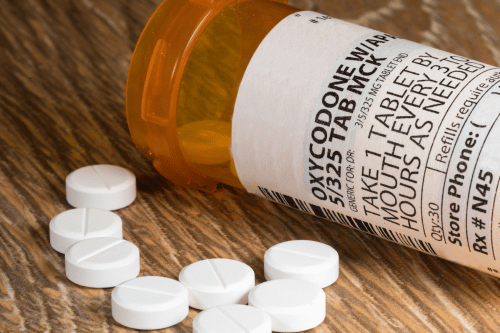

Percocet, a prescription medication used to manage moderate to severe pain, combines oxycodone, an opioid, and acetaminophen, a non-opioid pain reliever. When prescribed Percocet, it is crucial to follow healthcare provider instructions to avoid potential risks such as misuse, addiction, and issues related to drug testing. While effective in treating pain, Percocet has a high potential for abuse and dependency due to the presence of oxycodone, making it critical for users to understand how long it stays in the body. Whether you’re concerned about passing a drug test, managing medication schedules, or worried about dependency, understanding the duration that Percocet remains in your system is vital.
This article will break down the factors influencing how long Percocet stays in your system, how different drug tests detect it, and the key considerations around safe and responsible use.
Percocet is a powerful prescription pain medication typically used for acute and chronic pain. It consists of oxycodone, a potent opioid, and acetaminophen, a common over-the-counter pain reliever. The opioid component, oxycodone, works by binding to opioid receptors in the brain and spinal cord, which blocks pain signals and alters the body’s perception of pain. The addition of acetaminophen enhances the pain-relieving effects of oxycodone.
Because of its opioid content, Percocet is classified as a Schedule II controlled substance in the United States, meaning it has a high potential for abuse and addiction. Therefore, it’s often prescribed with caution, especially for those with a history of substance use disorder or chronic pain conditions.
The amount of time Percocet remains detectable in your system can vary significantly based on several factors, including the dose, frequency of use, metabolism, and overall health. The most important element affecting how long Percocet stays in your system is the Percocet half-life—the time it takes for half of the drug to be eliminated from the body.

For immediate release oxycodone, like those commonly prescribed, the half-life of oxycodone is approximately 3.5 hours. These formulations are designed for rapid pain relief, providing immediate and effective relief from pain. However, it takes about five to six half-lives for a drug to be fully eliminated from the body. Therefore, it could take roughly 19 to 24 hours for Percocet to be cleared from the bloodstream. Despite this, traces of the drug can still be detected in various tissues and fluids well beyond this period.
Different drug tests have varying detection windows, and the length of time Percocet is detectable depends on the type of test used:
Urine drug tests are the most common form of drug testing for Percocet. In most cases, oxycodone is detectable in urine for 3-4 days after the last dose. Chronic or heavy users may have detectable traces for up to a week in a urine test.
Blood tests have a shorter detection window, typically showing the presence of oxycodone for up to 24 hours after the last dose. Because of this short detection period, blood tests are often used in situations where recent drug use is suspected.
Saliva tests are becoming more popular due to their non-invasive nature. Oxycodone can be detected in saliva for up to 1-4 days after the last dose, making it a reliable method for testing recent use.
Hair follicle tests offer the longest detection window, with oxycodone detectable for up to 90 days. However, this method is less commonly used due to its cost and the time required for hair to grow to a detectable length.
Several factors affect how long Percocet remains detectable in your system:
Metabolism: Individuals with a fast metabolism will process and eliminate Percocet more quickly than those with a slower metabolism.
Liver and Kidney Function: Percocet is primarily metabolized by the liver and excreted by the kidneys. Impaired liver or kidney function can slow down the elimination process, causing the drug to stay in your system longer.
Body Mass and Fat Composition: People with higher body fat or larger body mass may store oxycodone longer, as the drug can accumulate in fatty tissues.
Frequency and Duration of Use: Long-term or chronic users of Percocet are likely to have extended detection windows because the drug builds up in the system over time.
Age: Older adults generally have slower metabolic rates, which can result in the drug staying in the system longer.

Understanding how long Percocet stays in your system is crucial for a variety of reasons:
Drug Testing: For individuals required to undergo drug testing for work, legal matters, or medical reasons, knowing how long Percocet stays detectable is important. Testing positive for oxycodone can have significant consequences, especially if the drug is not prescribed or is misused.
Preventing Overdose: Accidental overdose can occur if someone takes an additional dose of Percocet while the previous dose is still active in the system. Knowing how long the drug remains effective and detectable can help avoid unintentional misuse.
Managing Withdrawal: For those who have developed a dependency, understanding how long Percocet stays in the system is key to managing withdrawal symptoms. These symptoms typically begin within 12-24 hours after the last dose and can last several days.
Safe Use of Other Medications: Percocet can interact with other medications, leading to adverse effects. It’s essential to know when the drug is fully cleared from your system before starting any new medication.
Because Percocet contains oxycodone, it carries a significant risk of addiction and physical dependence. Percocet addiction poses serious risks and implications, including the potential for overdose and dependence. Prolonged use can lead to the body becoming accustomed to the presence of the drug, requiring higher doses to achieve the same effect—a phenomenon known as tolerance. Over time, this can develop into opioid addiction, characterized by compulsive drug-seeking behavior despite negative consequences.
When someone dependent on Percocet stops taking the drug, withdrawal symptoms can set in within 12-24 hours. These symptoms may include:
Muscle aches
Anxiety and irritability
Nausea and vomiting
Sweating and chills
Insomnia
Cravings for the drug
These symptoms can be severe, which is why many people seek professional help when trying to stop using Percocet. Medically supervised detox and medication-assisted treatment (MAT) can provide safer ways to manage withdrawal and support recovery.
Percocet can interact with other drugs and substances, which can increase the risk of dangerous side effects or reduce the effectiveness of treatment. Alcohol, benzodiazepines, and other central nervous system depressants can amplify the sedative effects of Percocet, leading to potentially life-threatening respiratory depression.
Moreover, certain medications used for chronic conditions like depression, anxiety, or other pain management strategies can have serious interactions with Percocet. Always consult with your healthcare provider before combining Percocet with any other medications or substances.
Given the risks associated with long-term opioid use, it’s important to consider alternative pain management strategies. These may include non-opioid medications, physical therapy, lifestyle changes, and cognitive behavioral therapy. In cases of chronic pain, individualized treatment plans developed in collaboration with healthcare providers can help manage pain while minimizing the risks of opioid dependence.
Understanding how long Percocet stays in your system is essential for anyone using the medication, whether prescribed or otherwise. The drug’s detectability depends on various factors like the type of drug test, your body’s metabolism, and how long and frequently you’ve used Percocet. While the drug’s half life provides a rough estimate, traces can linger in your system long after the drug’s effects have worn off.
If you’re concerned about dependency or addiction, seeking help from a healthcare provider or addiction specialist is crucial. With the right support and treatment, it’s possible to manage pain safely and responsibly, reducing the risks associated with opioid use. Whether it’s understanding drug interactions, managing withdrawal symptoms, or planning for a drug test, having accurate information empowers you to make informed decisions about your health and well-being.

At Sullivan Recovery, as an in-network provider we work with most insurance plans, such as:
And More
If you or a loved one are struggling with mental health challenges or substance abuse, reach out to Sullivan Recovery today. Our team of compassionate professionals is here to support your journey towards lasting well-being. Give us a call at 949-836-7180.
Percocet can typically be detected in urine for up to 3-4 days after the last dose. However, for chronic or heavy users, this detection window may extend to up to a week. Urine tests are the most common method of drug testing for Percocet due to their relatively long detection window and ease of administration.
Yes, hair tests can detect Percocet use, and they offer the longest detection window among drug tests. Percocet can be detected in hair follicles for up to 90 days after the last dose. This method is less commonly used but is highly effective for identifying long-term drug use.
Several factors can influence how long Percocet stays in your system, including your metabolism, liver and kidney function, body mass, age, and the frequency and duration of use. For example, individuals with slower metabolic rates or impaired liver function may retain the drug longer, extending the detection window.
While there is no guaranteed way to significantly shorten the time Percocet stays in your system, staying hydrated, maintaining a healthy diet, and exercising may help your body metabolize and eliminate the drug more efficiently. However, these methods are not foolproof, and the drug’s elimination will still largely depend on your individual metabolism and overall health.